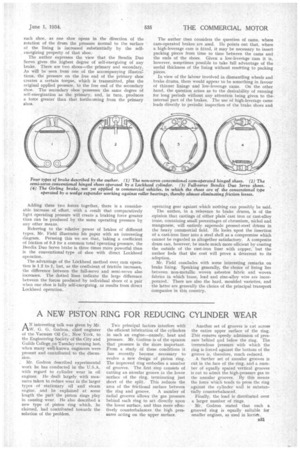A NEW PISTON RING FOR REDUCING CYLINDER WEAR
Page 49

If you've noticed an error in this article please click here to report it so we can fix it.
A N interesting talk was given by Mr.
W.G. G. Godron, chief engineer of the Vacuum Oil Co., New York, to the Engineering Society of the City and Guilds College on Tuesday evening last, when many well-known engineers were present and contributed to the discussion.
. Mr. Godron described experimental work he has conducted in the U.S.A. with regard to cylinder wear in oil engines. He dealt largely with measures taken to reduce wear in the larger types of stationary oil and steam engine, and he explained at some length the part the piston rings play in causing wear. He also described a new type of piston ring which, he claimed, had contributed towards the solution of the problem. Two principal factors interfere with the efficient lubrication of the cylinders in such an engine—namely, heat and pressure. Mr. Godron is of the opinion that pressure is the more important. From a study of these conditions it has recently become necessary to evolve a new design of piston ring. The improved ring embodies a number of grooves. The first step consists of cutting an annular groove in the lower surface of the ring, terminating just short of the split. This reduces the area of the frictional surface between the ring and groove. A number of radial grooves allows the gas pressure behind each ring to act directly upon the lower surface, and thus more effectively counterbalances the high pressures acting on the upper surface. Another set of grooves is cut across the entire upper surface of the ring. This ensures speedy admission of pressure behind and below the ring. The tremendous pressure with which the ring is forced against the bottom of the groove is, therefore, much reduced.
A further set of annular grooves is cut in the face of the ring, and a number of equally spaced vertical grooves is cut to admit the high-pressure gas to the annular grooves. By this means the force which tends to press the ring against the cylinder wall is substantially counterbalanced.
Finally, the load is distributed over a larger number of rings.
Mr. Godron stated that such a grooved ring is equally suitable for smaller engines, as used in lorries.




































































































